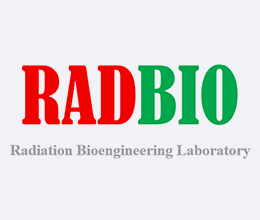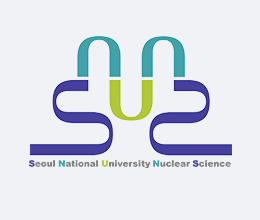Seoul National University Nuclear Science Group
- · Professor : Geehyun Kim
- · Phone : 02-880-7214
- · Location : 31-113 / 31-114 / 31-115
- · Homepage : http://snuns.snu.ac.kr
A vast span of nuclear science and technology utilizing radiation, including extensive areas in medical and industrial application, nuclear security and safeguards, as well as basic science research, is crucially based upon instrumentation technique. The primary focus of our research group is oriented to the development of nuclear instrumentation techniques and their interdisciplinary applications for synergistic effect. Main areas of interest include: (a) Radiation Detector and Detection Methods Development, (b) Nuclear Safeguards and Non-proliferation, (c) Radiation Protection and Dose Assessment, and (d) Exploration Techniques on Earth and Space Missions. Specifically, the following keywords could represent the current stream of our research work — Nanomaterial-based Detectors, Activation Analysis, Neutron Measurement, Neutron Generators, Radiation Imaging, Well-logging, and Nuclear Materials Characterization.
Radiation Bioengineering Laboratory
- · Professor : Eunhee Kim
- · Phone : 02-880-7208
- · Location : 31-118 / 31-414 / 31-414-1

The Radiation Bioengineering Laboratory (RadBio Lab) conducts education of human resources and development of engineering technologies in the field of radiation/radiological protection, which is responsible for ensuring the safety of the human body from radiation hazards. Technical elements of research include (1) design and production of irradiation devices, (2) experiment design testing the cellular response to radiation, (3) computer simulation of the physical phenomena in radiation interaction with biological targets, and (4) mathematical modeling of the relationship between radiation exposure and harm to the human body. RadBio Lab has a research infrastructure including a self-designed hard X-ray irradiation facility, a self-made cell exposure system with alpha particles, and bio-test laboratory. Research achievements include (1) development of a skin cancer treatment protocol using nano-gold particles, (2) data production and utility analysis of plasma for medical use, (3) advancement of industrial use of radiation under safety management, and (4) development of an algorithm for quantifying DNA damage under diverse situation of radiation exposure. The on-going research items list (1) bio-response scpecific to low-dose radiation exposure, (2) dependence of DNA damage on radiation property, (3) quantitative interpretation of DNA damage distribution and cell killing from radiation exposure, and (4) optimization strategy of radiation treatment. RadBio Lab currently focuses on the project regarding ‘machine learning-based assessment of biological impact of radiation by integrating large-scale biological experiment data and Monte Carlo simulation data of radiation interation with human body.’
Plasma, Radiation & Ion Sources Laboratory
- · Professor : Kyoung-Jae Chung
- · Phone : 02-880-8337
- · Location : 31-108 / 31-112 / 31-405
- · Homepage : https://snupi.snu.ac.kr/
Plasma is one of the four fundamental states of matter. It contains a significant portion of charged particles – ions and/or electrons. The presence of these charged particles is what primarily sets plasma apart from the other fundamental states of matter. We are investigating physics and applications of non-magnetized or partially magnetized non-equilibrium plasmas, which are widely used in semiconductor fabrications.
Pulsed power is the science and technology of accumulating energy over a relatively long period of time and releasing it very quickly, thus increasing the instantaneous power. It can generate high energy density plasmas (HEDP) radiating strong X-rays or shock waves, enabling us to investigate extreme state of matter. Our research covers from fundamental physics of hot or warm dense matter (WDM) to applications of pulsed power technology to industrial and environmental fields such as water well cleaning and rock blasting.
An ion source is a device that creates atomic and molecular ions utilized for various applications such as particle accelerators, neutron generators, ion implanters, and ion engines. Our research focuses on the efficient generation of high-density plasmas and extraction of positive or negative ions from them. Currently, we are developing various ion sources ranging from conventional DC arc sources to RF and MW sources for the utilization to semiconductor manufacturing, nano-fabrication, space propulsion, and D-D neutron generation.
Pulsed power is the science and technology of accumulating energy over a relatively long period of time and releasing it very quickly, thus increasing the instantaneous power. It can generate high energy density plasmas (HEDP) radiating strong X-rays or shock waves, enabling us to investigate extreme state of matter. Our research covers from fundamental physics of hot or warm dense matter (WDM) to applications of pulsed power technology to industrial and environmental fields such as water well cleaning and rock blasting.
An ion source is a device that creates atomic and molecular ions utilized for various applications such as particle accelerators, neutron generators, ion implanters, and ion engines. Our research focuses on the efficient generation of high-density plasmas and extraction of positive or negative ions from them. Currently, we are developing various ion sources ranging from conventional DC arc sources to RF and MW sources for the utilization to semiconductor manufacturing, nano-fabrication, space propulsion, and D-D neutron generation.




